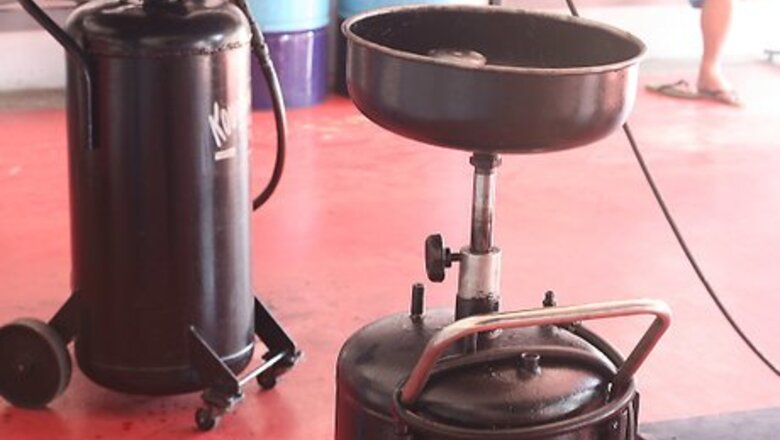
views
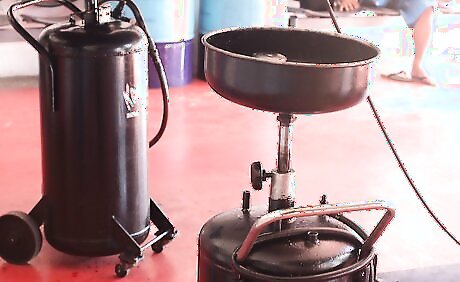
Change the oil and filter. If the car is being stored for an extended period of time, measured in years, talk to a mechanic about using oils without additives, which may include slightly caustic detergents.
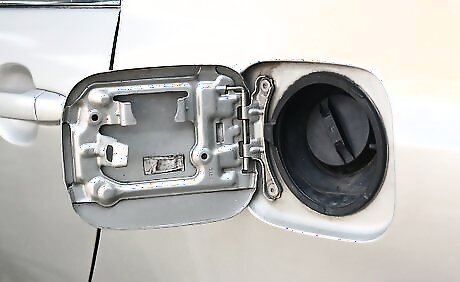
Fill the fuel tank with fresh, premium fuel. Condensation in the tank is a problem in stored vehicles, and it is widely suggested that you fill the tank completely with Premium non-alcohol fuel in order to avoid any empty space where water can accumulate. However, the gasoline can become "gummy" over time, so it is useful to add a gasoline stabilizer, which is available for lawn mowers and other seasonal yard equipment. In some areas, premium gas does not contain ethanol which is corrosive and can release water when stored for long periods. Check with gasoline company distributor.

Make sure coolant levels are proper.
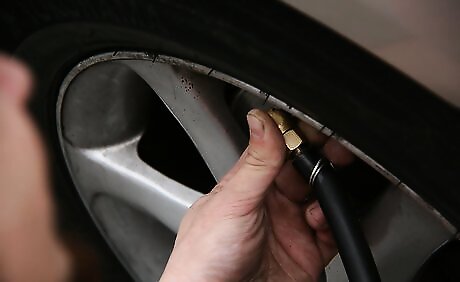
Inflate the tires to proper pressure. If you are storing for the winter in a cold climate, check the manual for proper pressures.Over inflation while in storage may help to prevent flat spots. After storage expect some thumping tires until they are driven 10 miles (16 km) or so.
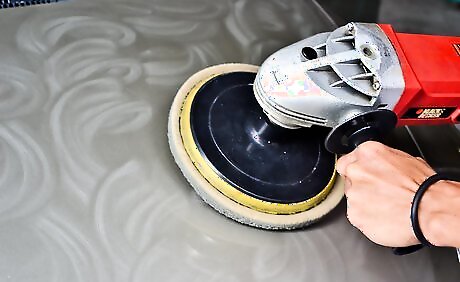
Clean and wax the car. Be sure to wash under the car to remove any dirt, especially from the the wheel wells. Clean the interior extensively, being especially vigilant about all food scraps and particles; these can attract small animals. Removing the carpets for heated indoor storage will prevent them from becoming musty. Do not use Armor All® or similar products; these contain water, which may become trapped inside the car.
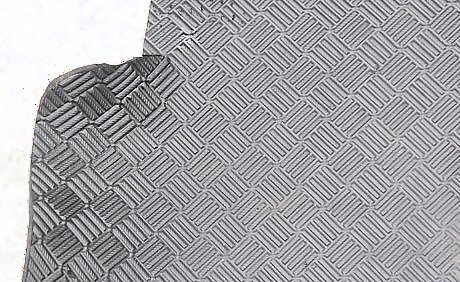
Consider placing a sheet of vapor barrier plastic under the car on the floor if being stored indoors. This will prevent water vapor buildup in an unheated garage, and also makes it very easy to spot fluid leaks when the car is removed from storage.

Open a window slightly if stored indoors, but not enough to allow small animals inside. Put the top up if it's a convertible. Stuff a rag into the air intake and exhaust to prevent animals from nesting, covering this with a metal screen (1/4 inch square screen is useful here). Some suggest using strong-smelling chemicals like soap or mothballs to keep animals away, but these can leave a smell in the car.
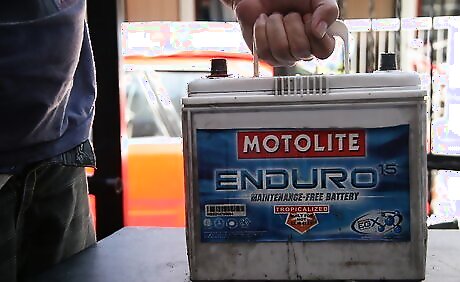
Use a battery maintainer if the car will be stored for more than a month. These are basically "smart" battery chargers that only turn on periodically. For short times, a few months, the maintainer can be attached to the battery while still in the car. For extended periods, if you are comfortable with basic mechanics, removing the battery and attaching the maintainer to it outside the car is a advisable. If you choose to do this, be sure to contact the car's manufacturer to ensure that this will not confuse the on-board computers, and that you have written down any needed access codes for devices such as the stereo or alarm.

Place a piece of plastic wrap on the windshield under the wiper blades, to prevent the rubber from sticking to the glass. Better yet, remove the blades completely and store them in a warm place (perhaps beside the battery and carpets). If you remove the blades, be sure to pad the ends of the wiper arms, which can scratch the glass if inadvertently turned on. You can also leave the wipers in place and just wrap them with plain plastic wrap. This can be gently scrubbed from the window if it sticks. Alternatively, if your car has the windshield wiper arms that pop out and away from the windshield, you can store them in the "out" position
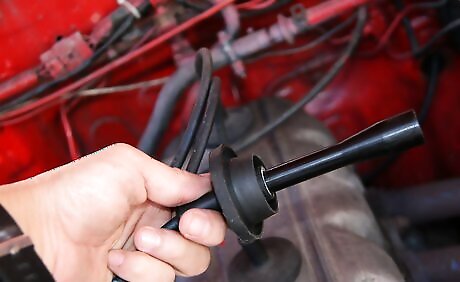
Remove the spark plugs and spray a small amount of oil into the cylinders to prevent rusting, then insert the plugs again. Do this only if you are comfortable with basic mechanics. Special "fogging oil" is available for storing boats, and will work well here. Use of a spark plug anti-seize lubricant on the threads is always advisable, as to prevent the threads from sticking. It will make disassembly easier, when it's time to change the spark plugs. If you wish to pass on this procedure, there are fuel additives (non alcoholic) that can be added and then driven to coat upper engine parts.
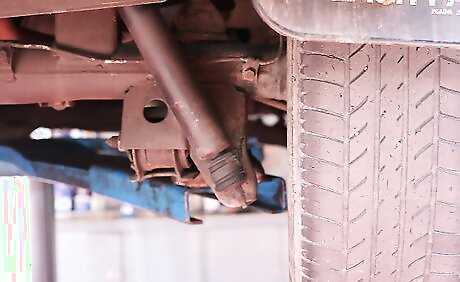
If the car will be stored for extended periods of time, it is advisable to jack it up on axle stands to avoid flat spots in the tires. "Extended" in this case depends on the type of tires; bias-ply tires need to be jacked up sooner than radials, and high-profile sooner than low-profile. A "classic" car with fat bias-ply tires should be jacked up if stored for more than a month, a modern sports car with low-profile radials should be fine for a winter.
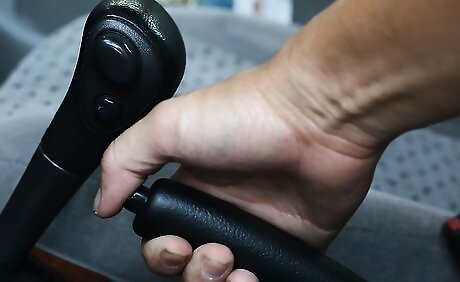
Release the handbrake. If the brake is left on, the brake pads can stick to the rotors. Place chocks under the tires to prevent movement, which is even more effective than the brake, anyway.
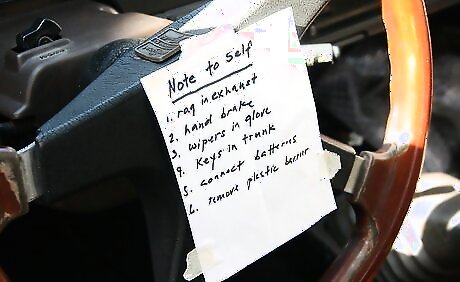
Place a note to yourself on the steering wheel outlining which optional steps above you carried out (rag in exhaust, rag in intake, carpets removed, battery removed, etc). When returning to the car in the spring, ensure all of these steps are reversed, checking them off as you go down the list. The list should contain every item separately; "rags in openings" may lead to one being left behind.
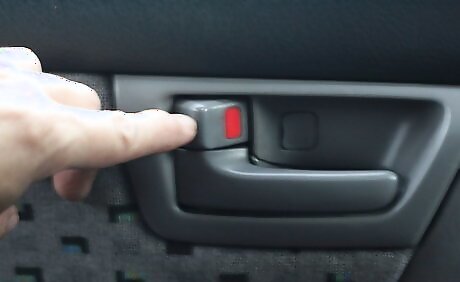
Lock the doors. It will help in case someone tries to steal something from your car.
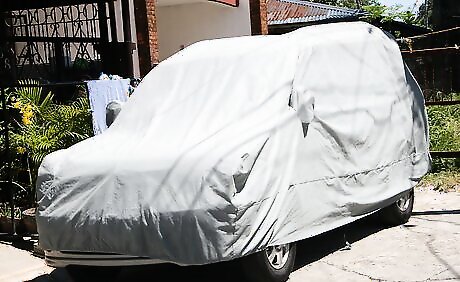
Use a car cover only for outdoor storage, or in very dusty locations. Leaving the car "open" indoors allows water vapor to leave the car after humid weather.















Comments
0 comment